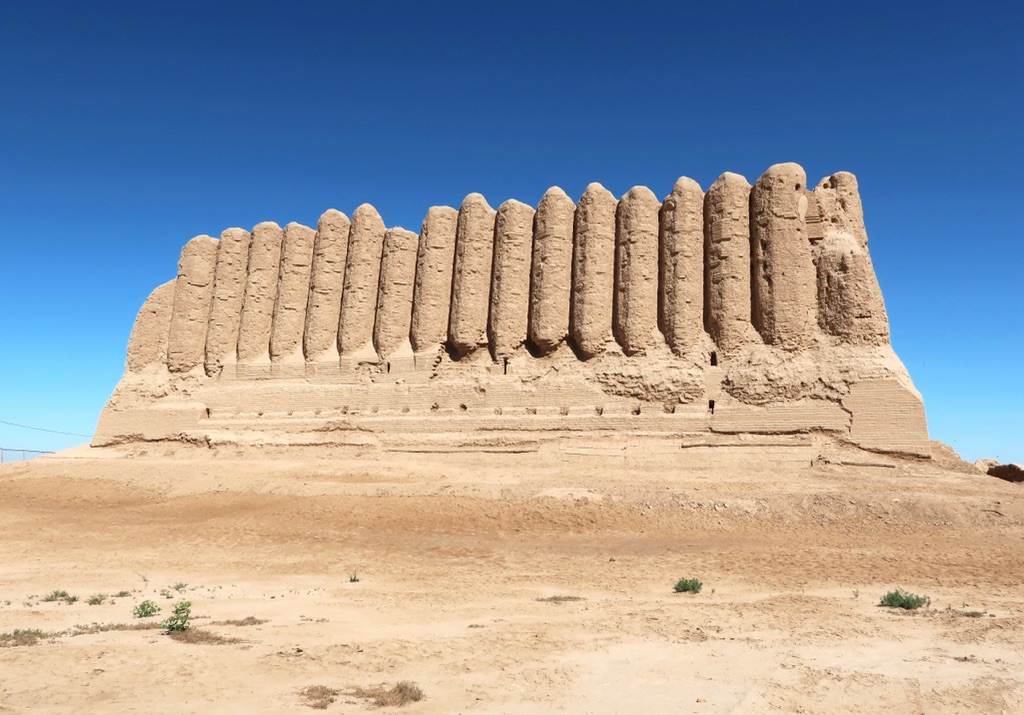Summary
An Architectural Marvel of Antiquity
Great Kyz Kala stands as a testament to the architectural ingenuity of the ancient Merv. Nestled in present-day Turkmenistan, this historic site captivates visitors with its distinctive corrugated walls. Thought to date back to the 8th or 9th century, the structure is part of the larger historical landscape of Merv. Once a major oasis city along the Silk Road, Merv played a significant role in the exchange of culture, goods, and ideas. Great Kyz Kala, with its unique design and enduring materials, provides a fascinating glimpse into the past.
Get your dose of History via Email
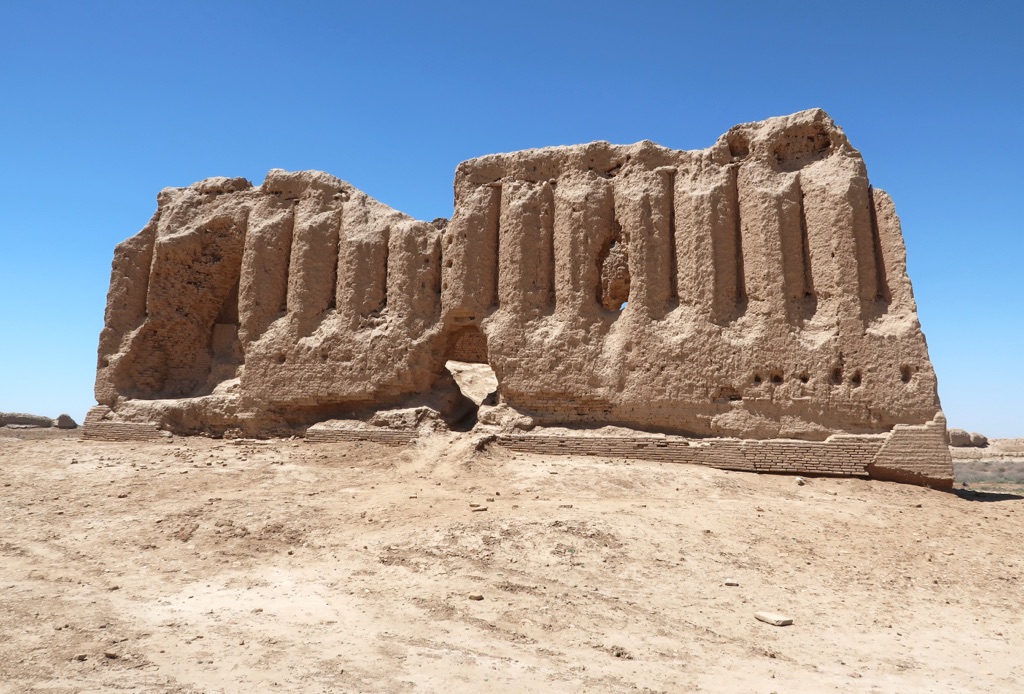
Unveiling the Historical Significance
The Kyz Kala complex has garnered attention for its historical and cultural significance. It underscores the region’s importance as a hub of ancient trade and intellectual exchange. Scholars believe the site functioned as an aristocratic residence or a fortified castle. Its labyrinthine passageways and imposing height suggest a multipurpose usage, combining daily life with defense needs. The significance of this site extends beyond its boundaries, offering insights into the adaptive strategies of the time and shedding light on the broader historical narrative of Central Asia.
Preservation Efforts and Challenges
Conservation of Great Kyz Kala reveals the complexities involved in preserving such ancient relics. The monument has stood the test of time but now faces challenges due to environmental conditions and human activities. International and local efforts are key in safeguarding its future. These efforts aim to promote sustainable tourism, enhance research, and implement conservation strategies. They echo the global commitment to protect our shared heritage. Visitors today can thus experience the awe-inspiring presence of Great Kyz Kala, a jewel of historical resilience.
Historical Background of Great Kyz Kala
The Origins and Age of Great Kyz Kala
Great Kyz Kala, an ancient fortress, stands majestically in what was once the city of Merv, Turkmenistan. Historians date its construction to the 8th or 9th century. It sits within one of the oldest and most famed oases along the Silk Road. The fortification is distinct for its undulating exterior, a method thought to provide strength and deter attacks. Unlike other structures from the period, Great Kyz Kala has survived largely intact. It serves as a witness to the ingenuity of its creators and offers a valuable link to our world’s past.
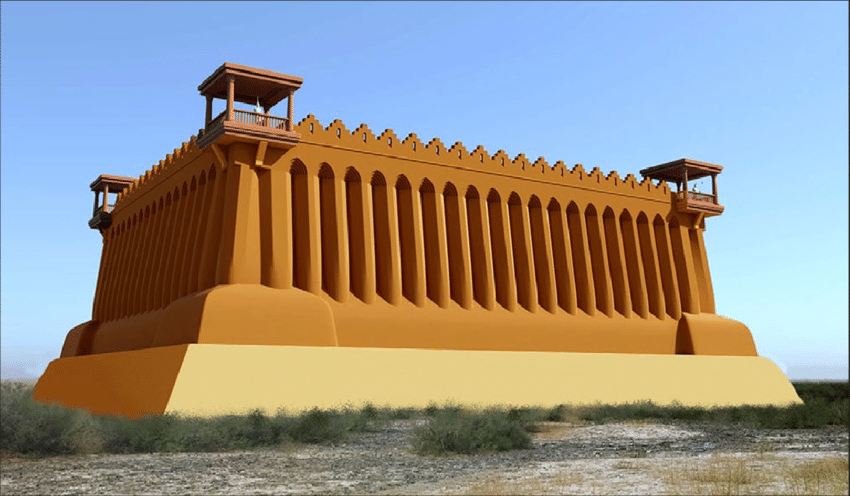
Role in the Silk Road Trade
Great Kyz Kala not only functioned as a military fortification but also played a key role in the Silk Road trade network. The city of Merv, as a thriving commercial hub, welcomed traders from across the world. Here at Great Kyz Kala, they would likely have sought protection and rest. The fortress thus became a significant cultural and economic meeting point. It fostered exchanges that shaped the history of Eurasia. The remnants of this site today invite us to explore the vast network of interactions that it once facilitated.
Architectural Wonders
The site’s architecture tells the story of a bygone era’s craftsmanship. The mud-brick construction has stood robust against the harsh climate for centuries. The corrugated walls of Great Kyz Kala, which are rare for their time, might have offered superior defense against enemies. They also demonstrate the evolution of architectural techniques. Within its environs, the layout suggests an advanced understanding of urban design and comfort. As such, Great Kyz Kala remains a fascinating study for architects and historians alike.
The inhabitants of Great Kyz Kala played a part in shaping the destiny of Merv. As sentinels of this historic outpost, they guarded not only their immediate homeland but also the broader geopolitics of Central Asia. Their daily lives and interactions within these walls contributed to the cultural and social legacy of the region. Discovering their stories helps us appreciate the depth and complexity of early civilizations. Great Kyz Kala thus stands as a monument to the human spirit, marking our shared heritage across borders and ages.
Today, Great Kyz Kala stands as a symbol of the human endeavor to build, protect, and flourish. It is a focal point for scholars in various fields who wish to understand the myriad ways in which our ancestors lived and thought. With its resilient walls echoing with the tales of time, it attracts the curious and contemplative. This site not only offers historical and educational value but also calls for introspection on the continuity of human history. The Great Kyz Kala beckons us to keep exploring, learning, and valuing our collective story.
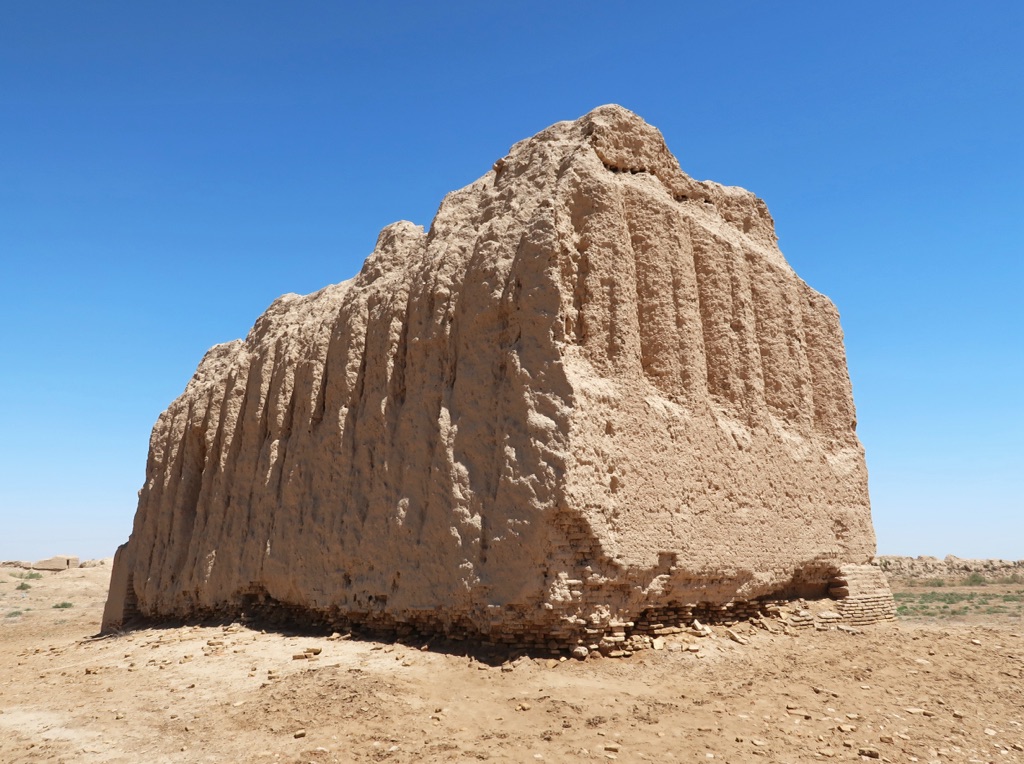
The Discovery of Great Kyz Kala
A Remarkable Unearthing in the 20th Century
The rediscovery of Great Kyz Kala ignited excitement among historians and archaeologists alike. The ruin was unearthed during the 20th century, a time when many ancient treasures came to light. Unlike sites discovered through planned expeditions, Great Kyz Kala revealed itself almost by chance. The wear of time had cloaked it in obscurity until scholars, combing through Turkmenistan’s rich historical landscape, realized its significance. Their findings shed light on the epitome of Silk Road-era fortification techniques.
The Russian Archaeological Mission
It was a Russian archaeological mission that first documented the site with academic rigour. They embarked on their journey in the early 1900s, a period bustling with archaeological discovery. The team, comprised of experts in the history and arts of Central Asia, aimed to catalog and preserve Turkmenistan’s ancient wonders. They meticulously recorded their findings, paving the way for future research on Great Kyz Kala. Their dedication unveiled a narrative long silent beneath the desert sands.
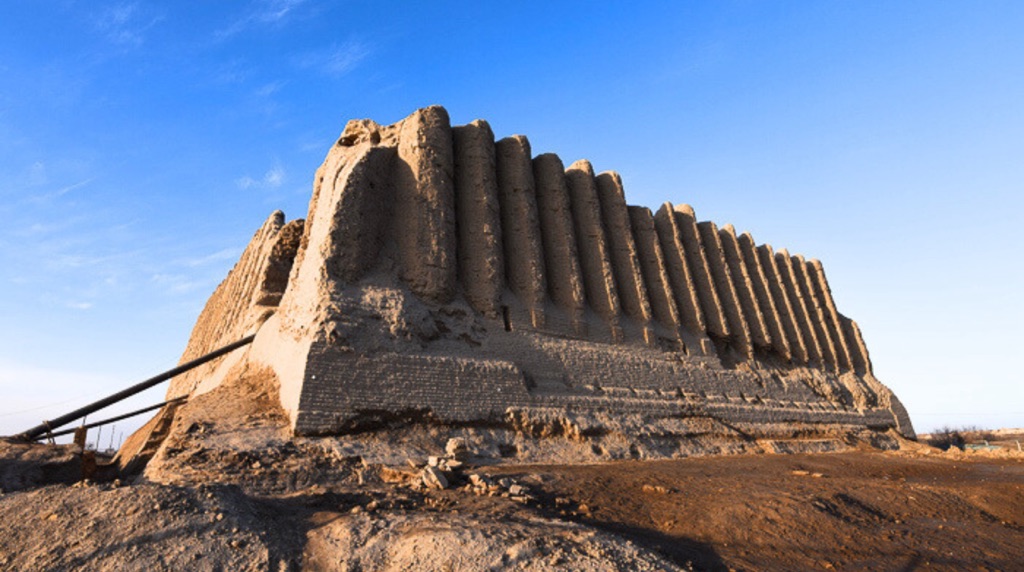
An Ancestral Gem Captured in Time
Among those who played a pivotal role in the discovery was famed archaeologist Galina Pugachenkova. It was under her keen eye that Great Kyz Kala’s intricate details came into focus. With restorative work following the discovery, her team revealed walls that stood as a defiant act against time’s erosion. The architectural design, which includes the renowned corrugated patterning, was interpreted as a testament to enduring craftsmanship. It was a gem of ancestral skill, captured in time for posterity.
The discovery showed that Great Kyz Kala was more than a fortress. It hinted at a fusion of defense and residential living, offering a look into ancient urban planning. Rooms in the structure indicated spaces for living that once might have bustled with daily activities. Now quiet, their walls speak volumes about life during the site’s zenith. Insights gained from the unearthed remains continue to inform us about the society that built this stronghold.
As excavation and restoration efforts continue, every artifact and structural feature uncovers new layers of history. The discovery process of Great Kyz Kala is far from over. Each finding adds to our understanding of this monumental relic. With continued study and preservation, the full story of Great Kyz Kala will gradually unfold. It represents an ongoing dialogue between the present and an immensely rich past, offering lessons and legacies that resonate through time.
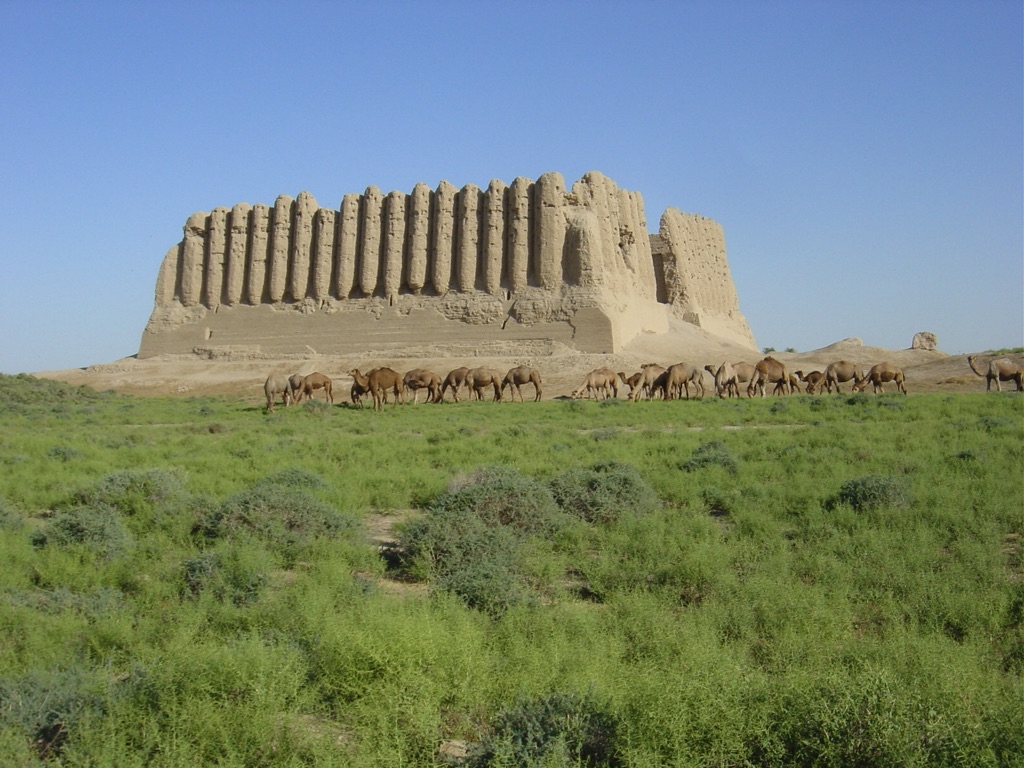
Cultural Significance, Dating methods, Theories and Interpretations
Unlocking the Epoch of Great Kyz Kala
Dating Great Kyz Kala has been a focal point for researchers aiming to understand its chronology. Radiocarbon dating and stratigraphic analysis have worked hand in hand to pinpoint a timeframe. These methods suggest an origin in the early Islamic period, specifically around the 8th to 9th centuries. This era was marked by cultural and economic growth, in which Great Kyz Kala likely played a role. Its formation coincides with the rise of the Seljuk Turks, giving clues to its cultural backdrop.
The Cultural Heartbeat of Ancient Merv
The cultural significance of Great Kyz Kala is immense. It is a cornerstone for understanding pre-Modern Islamic society in Central Asia. As a part of the ancient city of Merv, the site was once a melting pot of religions, languages, and trade. The city was a cultural powerhouse, influencing the region significantly. Great Kyz Kala embodies these diverse influences and stands as a monument to historical multiculturalism.
Diverse Theories on Its Purpose
Scholars propose several theories on the use of Great Kyz Kala. Some see it as a fortress, owing to its formidable walls and strategic location. Others argue it was a palatial residence, looking at its internal structure and layout. These interpretations point to a complex site with multiple roles. It might have been at the center of political power or a symbol of wealth and luxury. Further exploration may yield more clues to settle this debate.
Interpretations of Great Kyz Kala also reflect its socio-economic context. Beyond defense and domicile, some posit it was a caravanserai for Silk Road travelers. Its scale and design could accommodate caravans, offering rest and trade opportunities. Moreover, it could provide a statement of power and protection by the ruling class. These interpretations enhance our perception of ancient human interactions and societal structures.
The ongoing dialogue about Great Kyz Kala’s origins and uses keeps the site at the forefront of historic exploration. Archaeologists and historians continue to piece together fragments of its vast and varied past. It stands as a testament to the ingenuity and resilience of its builders. Great Kyz Kala bears witness to the evolution of an era and continues to inspire awe and scholarly inquiry.
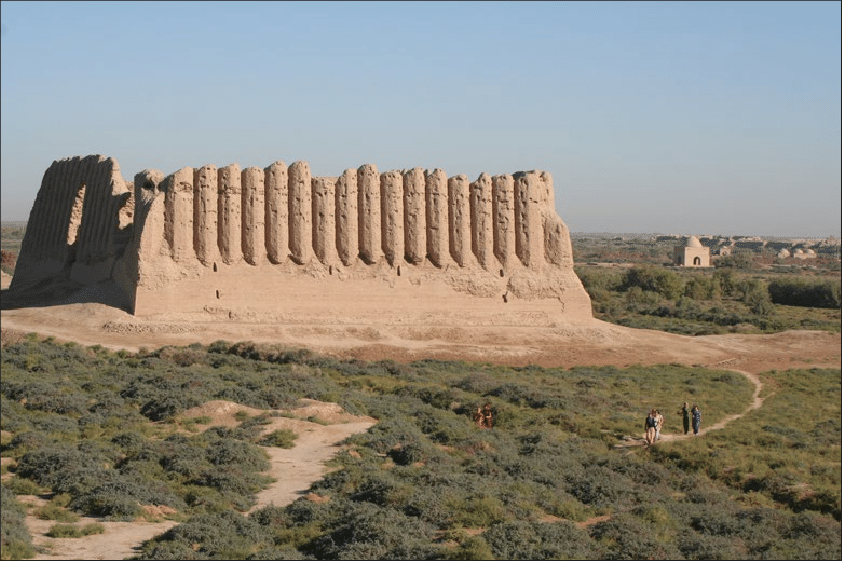
Conclusion and Sources
The exploration of Great Kyz Kala has unraveled many layers of history, offering a window into the past civilization of Merv. Its dating, cultural significance, and varying theories of its purpose enrich our understanding of the complexities of historical societies. With continued study and preservation efforts, Great Kyz Kala promises to yield even more discoveries about the Silk Road era and the diverse cultures that thrived along its path. As a beacon of ancient achievement and a source of national pride for Turkmenistan, Great Kyz Kala stands as a monument to human resilience and architectural prowess.
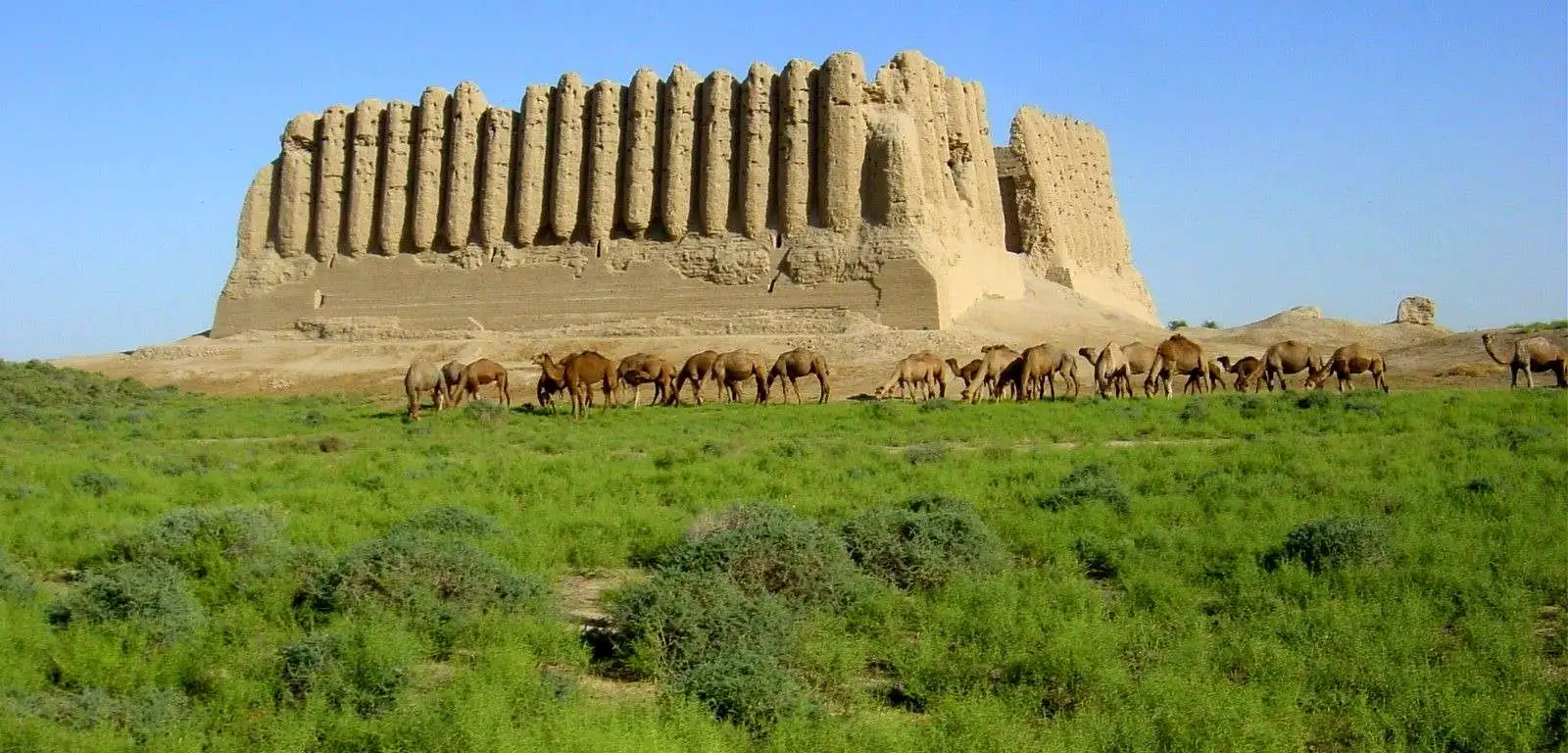
For further reading and to validate the information presented in this article, the following sources are recommended:
Or you can check any of these reputable archaeological and historical texts:
Herrmann, G. (1999). Monuments of Merv: Traditional Buildings of the Karakum. Society of Antiquaries of London.
Simpson, S.J. (2004). Queen of the World in Ruins: The Wonders and Wars of Merv. British Museum Magazine, (51), 26-31.
Kervan, R. (2012). The Seljuks of Anatolia: Court and Society in the Medieval Middle East. I.B. Tauris.
Pugachenkova, G.A., & Azimov, P.A. (2022). The Architecture of Turkmenistan. Springer International Publishing.

